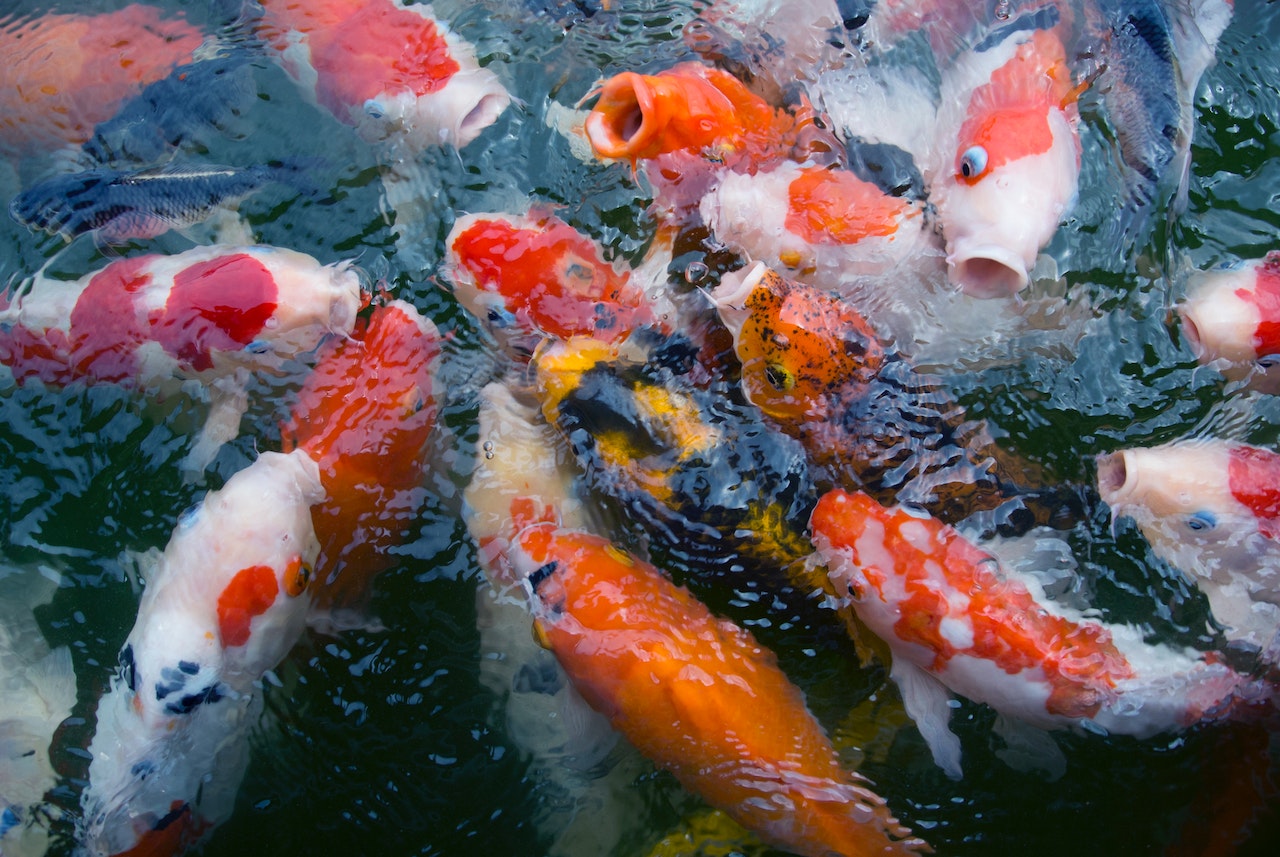Koi fish are admired worldwide for their vibrant colours, graceful movements, and captivating patterns. These ornamental fish are valued for their beauty and symbolism in various cultures. Koi fish prices are rising as pets and showpieces. In this article, we explore koi fish prices and the factors that affect them.

1. Genetics: Price’s Blueprint
Genetics determine koi fish value. Breeding, selection, and genetic lineage shape the fish’s qualities. Breeders select koi for their colour patterns, body shape, and desirable traits, which affects price. Premium koi with rare genetic traits sell for more.
2. Coloration: Value Kaleidoscope
Koi fish have vivid colours. Koi scales’ intensity, clarity, and colour combination determine their value. When contrasted harmoniously, deep reds, brilliant oranges, and striking blacks are prized. Patterns like Kohaku (red and white), Sanke (red, white, and black), and Showa (black, red, and white) make koi fish desirable.
3. Size: Value Rising
Size affects koi fish pricing. Due to their growth potential and care, these magnificent creatures increase in value. Larger, well-developed koi are more expensive. Large, well-proportioned koi fish are rare and expensive.
4. Age and Maturity: Wisdom Costs
Age and maturity affect koi fish value. Older koi have refined patterns and colours from years of growth. Collectors and enthusiasts prize these mature fish for their genetic potential. Wisdom and maturity bring appreciation for older koi’s unique qualities.
5. Breeder Reputation: Priceless
Koi fish prices depend on the breeder’s reputation. Excellent koi breeders have a legacy. Their specimens are expensive due to their reputation and koi community trust. Top-tier koi fish breeders are respected and their fish are in high demand.
6. Rarity: Uniqueness Costs.
Supply and demand affect koi fish prices. Collectors and enthusiasts prize specimens with unusual coloration, intricate patterns, or unusual body shapes. Since demand exceeds supply, these exceptional koi are expensive. Rare koi fish are worth more.
7. Wellness: An Investment
Koi fish prices depend on their health. Buyers want fish with active swimming, balanced body proportions, and clear eyes. Koi with strong immune systems and good health are worth investing in. Koi value increases with a healthy diet, clean water, and regular checkups.
8. Be Excellent: Competing
Koi shows and competitions have grown in popularity. Due to their quality and desirability, fish exhibited and awarded at these prestigious events command a higher price. Show quality koi are well-groomed, have perfect patterns and coloration, and meet competition standards. These exceptional fish are prized by serious collectors due to their accolades.
9. Market Demand and Trends
Koi fish prices fluctuate with market conditions. Koi demand can vary by colour, pattern, or type. Culture, fashion, and media can increase demand for certain koi. Smart breeders and sellers adjust prices to capitalise on market shifts.
10. Geography: Accessibility
Koi fish prices vary by location. Due to high demand, koi enthusiasts and collectors may drive prices down. However, quality koi in scarce areas may cost more. Transportation, import regulations, and local breeders can affect regional pricing.
Koi Fish Pricing Deciphered
Several factors affect koi fish prices. Fish value depends on their genetics, coloration, size, age, and maturity. The breeder’s reputation, rarity, and koi’s health also affect price. Demand, show quality, and location also affect pricing.
Understanding these factors can help you confidently navigate koi fish prices as an enthusiast or buyer. Appreciating the intricacies of koi fish value will help you choose a vibrant showpiece or a beloved pet.
Explore the world of koi fish, where beauty, rarity, and artistry combine to create extraordinary aquatic treasures.
